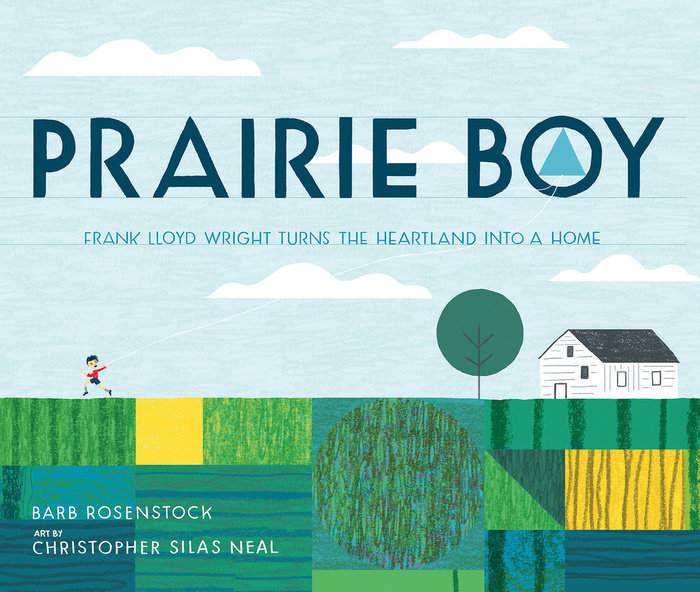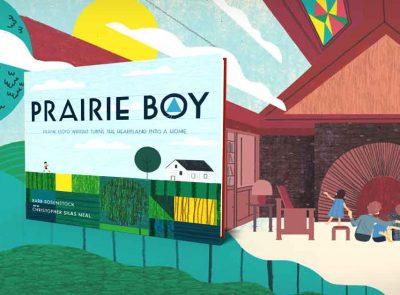
In this book about Frank Lloyd Wright for kids, young readers will learn all about America's first world-famous architect.
Frank Lloyd Wright loved the Wisconsin prairie where he was born. But as his family moved across the United States, young Frank found his own home in shapes: rectangles, triangles, half-moons, and circles. When he returned to his beloved prairie, Frank pursued a career in architecture, as he didn't think the Victorian-era homes found there fit the prairie landscape. Using his knowledge and love of shapes, Frank created houses more organic to the land. He redesigned the American home inside and out, developing a truly unique architecture style. Author Barb Rosenstock and artist Christopher Silas Neal explore the early life and creative genius of architect Frank Lloyd Wright, highlighting his passion, imagination, and ingenuity, in this STEAM nonfiction picture book.
Book Details
Junior Library Guild Selection
Notable Social Studies Trade Book for Young People
NSTA/CBC Best STEM Book
"An obsession with shapes serves as a leitmotif as Frank Lloyd Wright (1867–1959) grows to be a master architect... Neal’s stylized illustrations are geometrically anchored, with crisp lines and shapes that occasionally echo Wright’s signature patterning, and the earnest, informative narrative centers the subject’s relatable interests. Substantial supplemental materials include an author’s note, sources, and multiple photos of his work." –Publishers Weekly
'This picture-book biography captures how Frank Lloyd Wright revolutionized the American home. Lyrical text recalls Wright’s early passion for architecture and his desire to break away from the old European-style houses he felt didn’t match the American landscape. Digitally enhanced mixed-media artwork not only reflects colors that match Wright’s moods and physical locales, but also uses geometric shapes to embody his concepts. This look at Wright’s creative process will inspire children to take notice of their surroundings." –Booklist
"In this picture book biography of architect Frank Lloyd Wright, Rosenstock emphasizes the development of Wright's unique architectural vision... instead of focusing on specific buildings Wright created, this book highlights the roots of his thinking... an excellent introduction to the ideas behind Wright's architecture." –School Library Journal
"This very early introduction to the pre-eminent architect starts with his childhood, rich with prairie influences and a fascination with shapes... a compact narrative... makes clear the impact one person’s vision can have. Mixed-media and digital art combines childlike crayon-effectlines and textures with crisply stylized shapes; Neal stealthily builds up the pre-Wright landscape as cluttered with gingerbread houses, arrestingly interrupted with the bold horizontality of an early Wright building. This may help give weight to kids’ early play or open up their considerations of their own landscapes..." –The Bulletin of the Center for Children's Books


